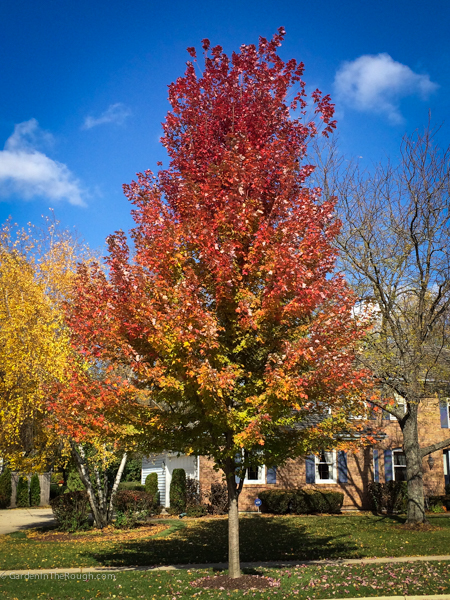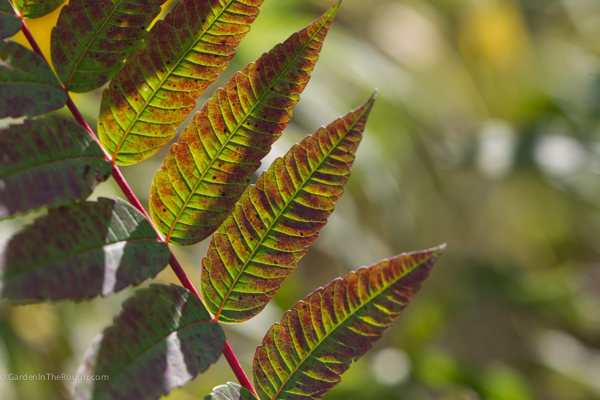


Tar spot is caused by a fungus in the genus Rhytisma.1 I first became aware of tar spot when I noticed that my newly mowed lawn was covered the following day with dropped maple leaves…in August! Upon closer inspection of the leaves on the lawn and on the tree, I noticed the leaves contained varying numbers of the black spots shown in the images above. As it turned out, several other trees in my neighborhood also had the same black spots.
Tar spots begin as small yellow-colored spots on the upper leaf surface that turn into black raised structures resembling tar. The fungus that causes tar spots overwinters on infected leaves and then releases its spores from the stroma (black spot) the following spring. The spores are spread by the wind onto new leaves that are beginning to unfold. The spots where the fungus colonizes the leaves become visible 1-2 months later, during the summer. Fortunately, tar spot is not usually detrimental to the tree—it is a cosmetic concern that can be managed by raking up the infected leaves and destroying them in the fall.2